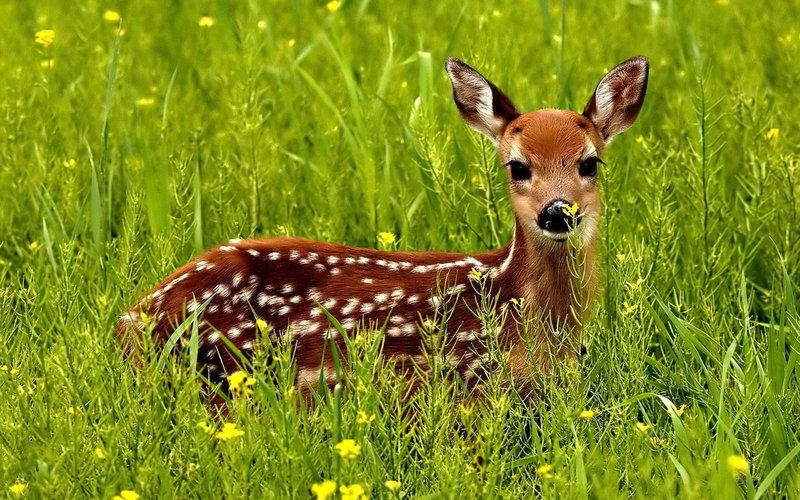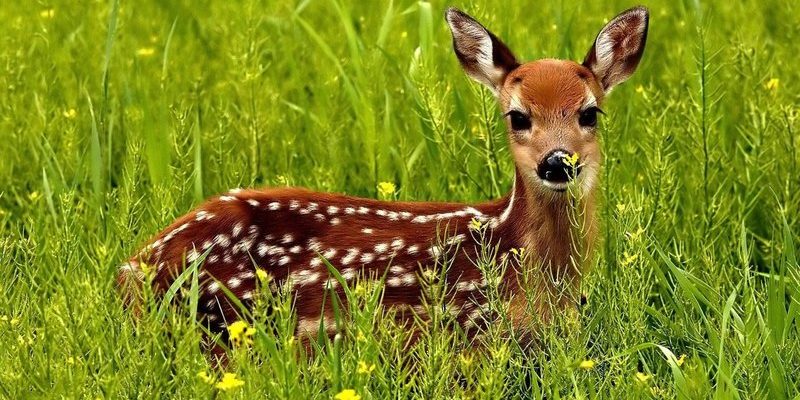
Surviving in harsh conditions isn’t just about tough luck. It’s a mix of smart strategies, physical adaptations, and a little bit of luck. Think of red deer gracing the highlands like people making their way through a snowstorm, bundled up and knowing how to find shelter. Let me explain how these magnificent animals endure some of nature’s toughest tests.
Physical Adaptations to Cold Weather
One of the first things to notice about red deer is their impressive physical size. Males, known as stags, can weigh up to 500 pounds! This bulk not only helps them survive but also provides a good layer of insulation. Their thick fur is crucial for warmth; it’s like a cozy, natural winter coat! During the winter months, the fur becomes even denser, trapping air close to the skin and keeping them warm in freezing temperatures.
In addition to their fur, red deer have a special layer of fat beneath the skin. This fat acts like a thermal blanket, providing insulation against the biting cold. Think of it as a built-in safety jacket. When the temperature drops, this layer ensures they maintain their body heat, allowing them to navigate their environment comfortably—even in snowy conditions.
Red deer are also equipped with strong legs, which help them traverse challenging terrains. Whether it’s steep hills or thick underbrush, their powerful legs allow them to escape predators and find food sources. You might say they’re nature’s athletes, ready for any challenge the environment throws at them.
Foraging Strategies in Scarcity
When winter rolls in, food becomes limited. Red deer have evolved some clever foraging strategies to cope with this scarcity. They aren’t picky eaters; their diet can shift based on what’s available. In spring and summer, they munch on lush grasses, leaves, and wildflowers. However, when the snow covers the ground, they adapt by digging through it to find hidden vegetation.
You might be wondering, how do they know where to dig? Well, red deer have a keen sense of smell. They can detect food buried under layers of snow. Imagine how satisfying it must be for them to uncover a tasty morsel after some hard work! This adaptability in their diet allows them to survive when conditions are tough.
Also, red deer often gather in groups to forage. This social behavior not only helps them find food more efficiently but provides safety in numbers. There’s strength in unity—when they’re together, they can keep an eye out for predators and protect one another.
Finding Shelter and Safety
In harsh environments, finding shelter becomes essential. Red deer have a keen instinct for seeking out safe spaces from storms and predators. They often move to the dense forests where they can hide from the wind and snow. It’s like an expert hiker finding a cozy cabin to wait out a snowstorm.
The deer also choose habitats that offer natural cover, such as thickets or areas with heavy vegetation. These spots not only protect them from harsh weather but also provide hiding places from potential threats like wolves. Their ability to blend into their surroundings is a survival skill honed over countless generations. Picture them as nature’s stealthy ninjas, slipping silently among the trees.
Additionally, red deer can often be spotted in more open areas during warmer times. During these periods, they take advantage of the sun’s warmth while still being near the shelter of trees. Balancing sun and shade allows them to regulate their temperature better—a clever tactic for maximizing comfort while minimizing risk.
Behavioral Adaptations to Stressful Conditions
When faced with harsh conditions, red deer exhibit unique behavioral adaptations. For starters, they become more cautious and aware of their surroundings. This heightened vigilance helps them detect danger early. Imagine a friend creeping through a dark basement—movements are slow, deliberate, and careful; that’s how deer approach the unknown.
During cold months, they also change their daily habits. Instead of being active throughout the day, red deer often lay low during peak cold hours, waiting until temperatures rise slightly to forage. This behavior not only conserves energy but also reduces the risk of frostbite or hypothermia.
One fascinating aspect of their behavior is their instinct to migrate. Depending on the region and the severity of the winter, some herds will travel to lower elevations where the weather is milder and food is more accessible. It’s like deciding to take a vacation to a warmer climate when winter hits. This mobility can mean the difference between life and death in extreme conditions.
Social Structure and Herd Dynamics
Red deer are quite social animals, and their herd dynamics play a significant role in survival. Living in groups offers safety from predators and a better chance of finding food. Within these herds, there’s a pecking order, typically with dominant males leading the group. This social structure helps maintain order, especially when foraging for scarce resources.
You might think of their groups like a family unit, where each member plays a role. The younger ones often learn from the older, more experienced members. By sticking together, they can share knowledge about finding resources, recognizing danger, and navigating their challenging environment.
During the rutting season, male deer engage in dramatic displays and competitions to establish dominance. These events might seem aggressive, but they actually serve a purpose—ensuring the strongest genes pass on to the next generation. It’s a fascinating blend of competition and cooperation, all geared toward survival.
Dealing with Threats from Predators
Predators are always a threat in the wild, and red deer have developed some clever ways to respond. They rely on their strong senses—especially their keen eyesight and acute hearing—to detect danger. Picture a vigilant lookout, scanning the horizon for any sign of trouble. That’s how red deer behave.
When they sense a predator, red deer have a few options. They can either freeze in place, blending into their surroundings, or make a high-speed retreat. Their long legs allow them to sprint away quickly to safety. It’s like when you suddenly have to run to catch a bus; that surge of adrenaline can help you move faster than you ever thought!
In addition to individual efforts, herd members communicate subtly with one another. They’ll use specific warning calls to alert others of danger. This quick exchange of information can be a game-changer, giving the herd precious seconds to react.
Red deer are a wonderful example of how life can thrive even in brutal conditions. Their physical adaptations, smart foraging strategies, and strong social structures create a robust framework for survival. By learning to navigate their environment with skill and care, red deer not only endure but flourish in ways that many animals cannot.
In essence, these magnificent deer remind us that resilience is key. Whether it’s adapting to the cold, searching for food, or staying safe from predators, red deer showcase the beauty of life’s adaptive nature. So, the next time you see a red deer, take a moment to appreciate the incredible journey they make just to survive. It’s a dance with nature, and they’re leading the way.

